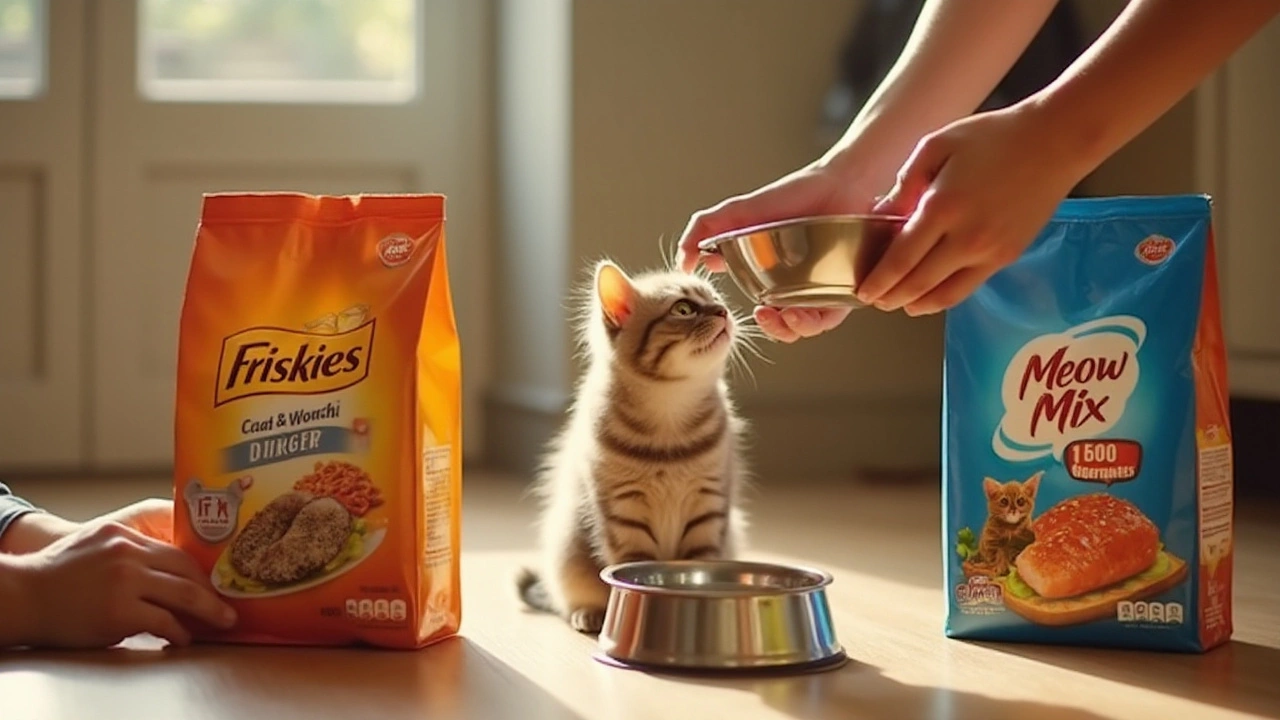Friskies Cat Food – Quick Guide for Happy Cats
If you’re scrolling through shelves or clicking online, Friskies is one of the first names you’ll see. It’s cheap, the flavors change often, and most cats seem to love it. But cheap doesn’t always mean good, and tasty doesn’t always mean healthy. Below you’ll find the basics you need to decide if Friskies fits your cat’s diet and how to serve it the right way.
Choosing the Right Friskies Product
Friskies offers wet cans, pouches, and dry kibble. Wet food is high in moisture, which helps with hydration—great for cats that don’t drink much water. Dry kibble is convenient and cheap, but it contains less water and more carbs. Look at the label: the first ingredient should be a real meat like chicken, turkey, or fish. If the first thing you see is "by‑product" or "meal," the protein quality is lower.
The brand also has specialty lines like "Friskies Indoor" or "Friskies Salmon & Tuna". These often contain added vitamins for indoor cats or extra omega‑3s for a shiny coat. Choose a line that matches your cat’s age and lifestyle. Kitten formulas have higher calories and DHA for brain growth, while senior versions reduce calories to prevent weight gain.
Feeding Tips & Portion Sizes
Start with the feeding guide printed on the can or bag, but treat it as a baseline. Adjust up or down based on your cat’s weight, activity level, and how much they’re gaining or losing. A typical adult cat (around 10 lb) needs about 200‑250 kcal per day. A 3‑oz can of Friskies wet food usually provides around 80‑90 kcal, so two to three cans a day cover most of their needs.
Mix wet and dry if you like the crunch of kibble but want extra moisture. For example, give half the daily kibble portion and supplement with a small wet meal. This keeps teeth healthy and adds variety without extra carbs.
Store opened cans in the fridge and use them within 48 hours. If you buy pouches, seal them tightly and keep them cool. Dry kibble should stay in an airtight container to keep it fresh and prevent pests.
Watch for signs that Friskies isn’t working for your cat. Persistent vomiting, diarrhea, or a dull coat may mean the protein is low quality or there’s an ingredient your cat dislikes. In those cases, switch to a higher‑protein brand or a limited‑ingredient formula.
Finally, don’t rely on Friskies alone for a balanced diet. Adding a small amount of fresh meat or a high‑quality supplement can boost nutrition. Talk to your vet if you’re unsure—most vets are happy to help you fine‑tune a budget‑friendly feeding plan.
Bottom line: Friskies can be a practical, tasty option when you know which product to pick, how much to feed, and when to supplement. Keep an eye on your cat’s weight and health, and you’ll get the most out of every bag or can.
Posted By Bryndle Redding On 7 Jan 2025 Comments (0)
Friskies vs. Meow Mix: Which Cat Food Comes Out on Top?
Deciding between Friskies and Meow Mix for your cat's meal can be daunting. Both brands offer a variety of flavors and formulas, aiming to suit different feline needs. This article delves into nutritional content, flavor variety, and quality to help you make an informed decision. Keep reading to discover which brand might lead to happier and healthier cats.
READ MORE